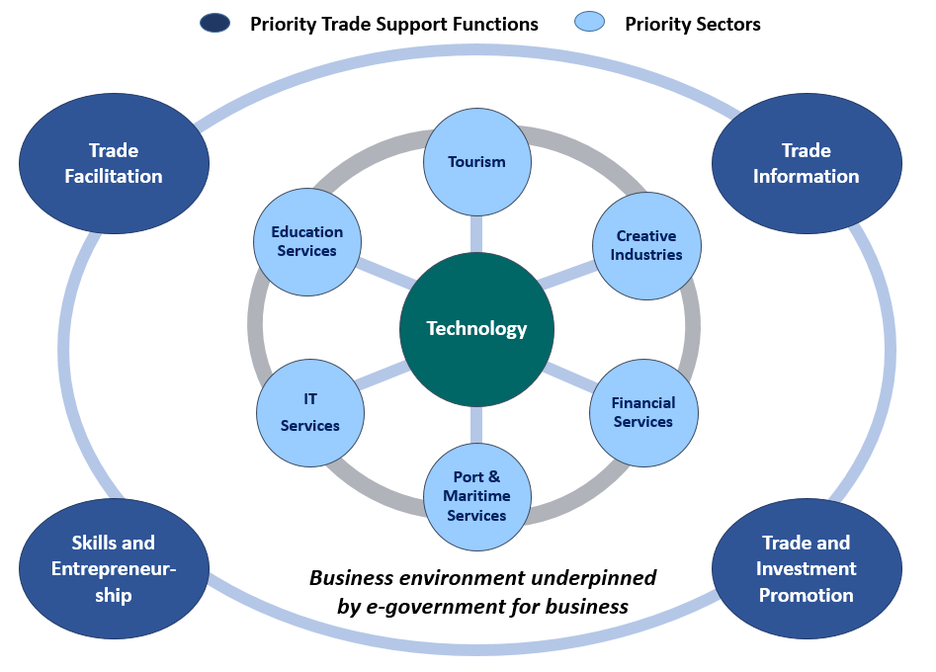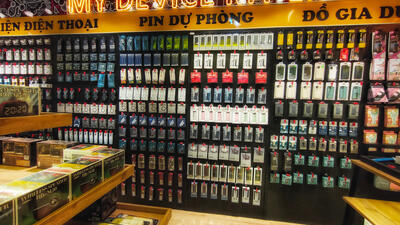
Entering the Plan of Action stage: Curaçao’s National Export Strategy
Stakeholders of the Curaçao National Export Strategy are designing the action plans for five sectors and four trade support functions strategies to achieve the country’s vision of “Curaçao – where business succeeds”.
The government of Curaçao, represented by the Ministry of Economic Development with the technical support of ITC’s Trade Development Strategies Programme, has been designing a National Export Strategy to increase foreign exchange earnings, diversify exports and drive economic development. The strategy focuses on transforming the economic make-up of the country through creating new value chains in services exports. Four support functions will upgrade the business environment and supporting ecosystem to benefit the whole economy.
Components of the Curaçao National Export Strategy
Stakeholder ownership
Each sector and trade support function strategy has a dedicated team with public and private-sector representatives, led by Igorr Hieroms (education services), Gwido Jansen (trade information and trade facilitation), Gonneke van den Kieboom (creative industries), Sam Kruiner (trade and investment promotion), Raynel Martis (skills and entrepreneurship), René Romer (financial services), Vanessa Toré (ports and maritime services) and Danilo Zabala (IT services)
Overcoming constraints and entering new paradigms
With the guidance of the International Trade Centre, the various teams are entering the last stage of the strategy design process: developing the plans of action that will achieve the objectives and priorities of each strategy.
To date, the teams have identified competitiveness constraints, policy inadequacies, institutional support limitations, and bottlenecks affecting entrepreneurship and export performance. Stakeholders also charted future orientations for sector development, including identifying new value chains, based on supply-diversification capacities and market opportunities.
In this final stage, remote stakeholder consultations and online exercises translate the vision and strategic objectives into actionable solutions. Some teams have validated their strategic orientation, for example:
- Curaçao’s Trade and Investment Promotion Strategy will seek to coordinate the efforts of various institutions and ensure coherence to promote investment that boosts exports to existing and new markets.
- The Creative Industries Strategy focuses on sector coordination to create a branding and marketing strategy for the specific services selected for export.
- The Financial Services Strategy focuses on upgrading policies and regulations to enable new services.
- The Information Technology Strategy is the foundation for achieving the technology-enabled future of Curaçao. As such it seeks to not only strengthen the IT sector, but also to form strong linkages with other sectors of the economy, including the government.
Responsibility for the implementation of these solutions will be assigned to specific institutions within a timeframe of five years. Following the conclusion of the strategy, these activities will form the basis for implementation and results tracking under a coordinated implementation-management framework.
The Curaçao Export Council is up and running
In parallel, the recently established Curaçao Export Council has begun its discussions to address structural constraints affecting the island’s prospects for growth and competitiveness. Launched in March of this year, the Council acts as an advisor to the government and private sector through leadership and coordination. It is composed of key public and private stakeholders to identify holistic solutions to the issues. In its first meeting, the Export Council discussed possible solutions related to e-payments for e-commerce and immigration policies for highly skilled professionals.
















